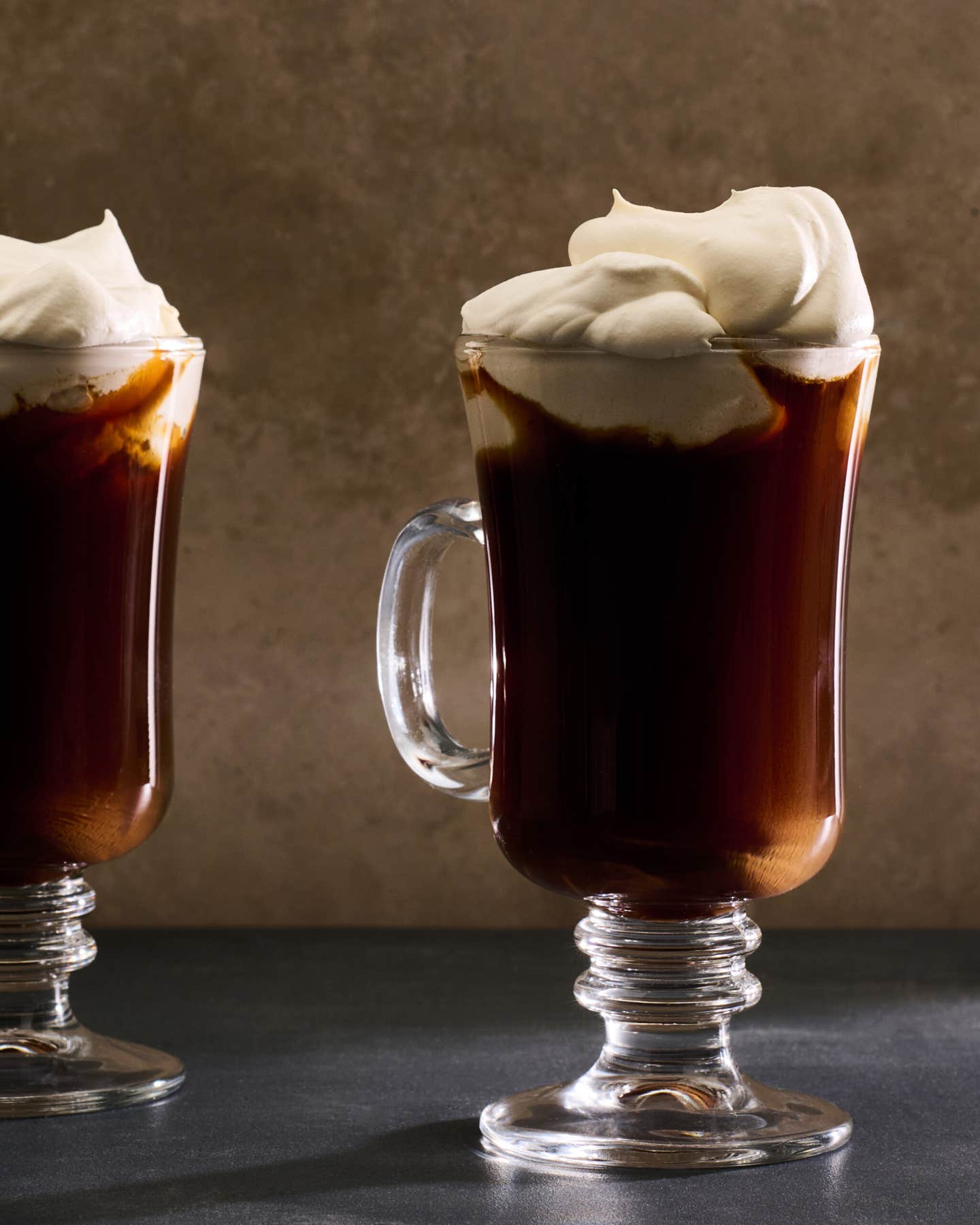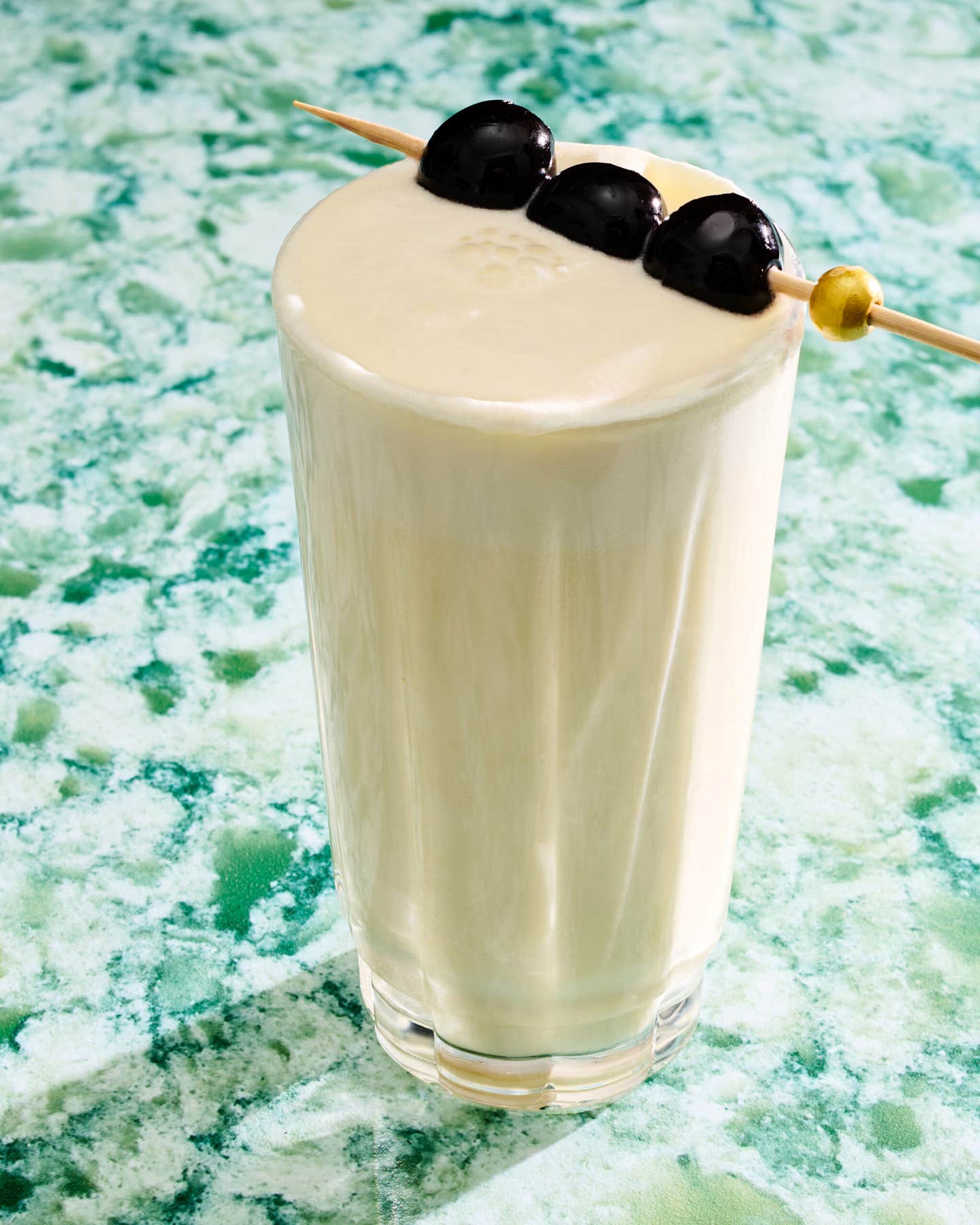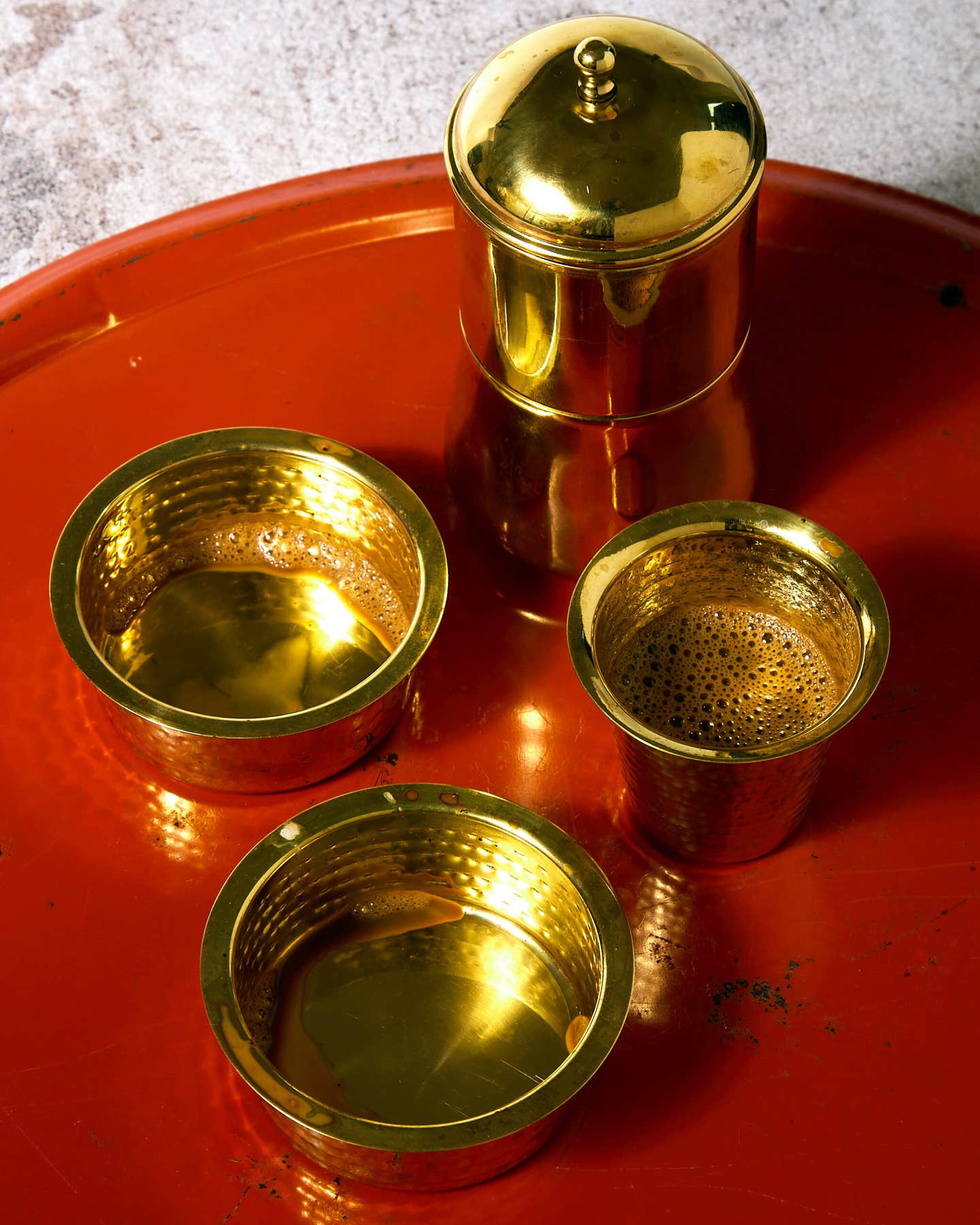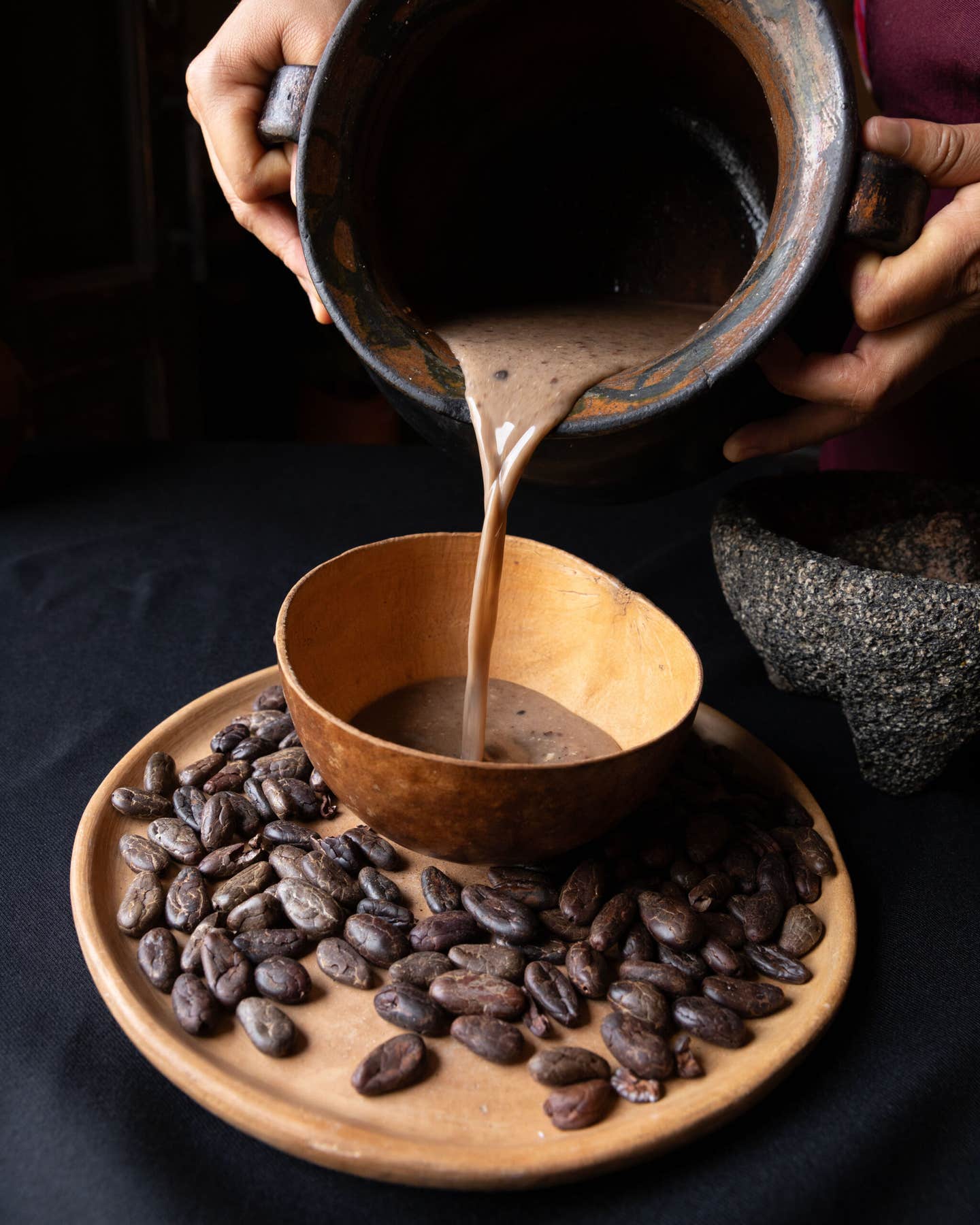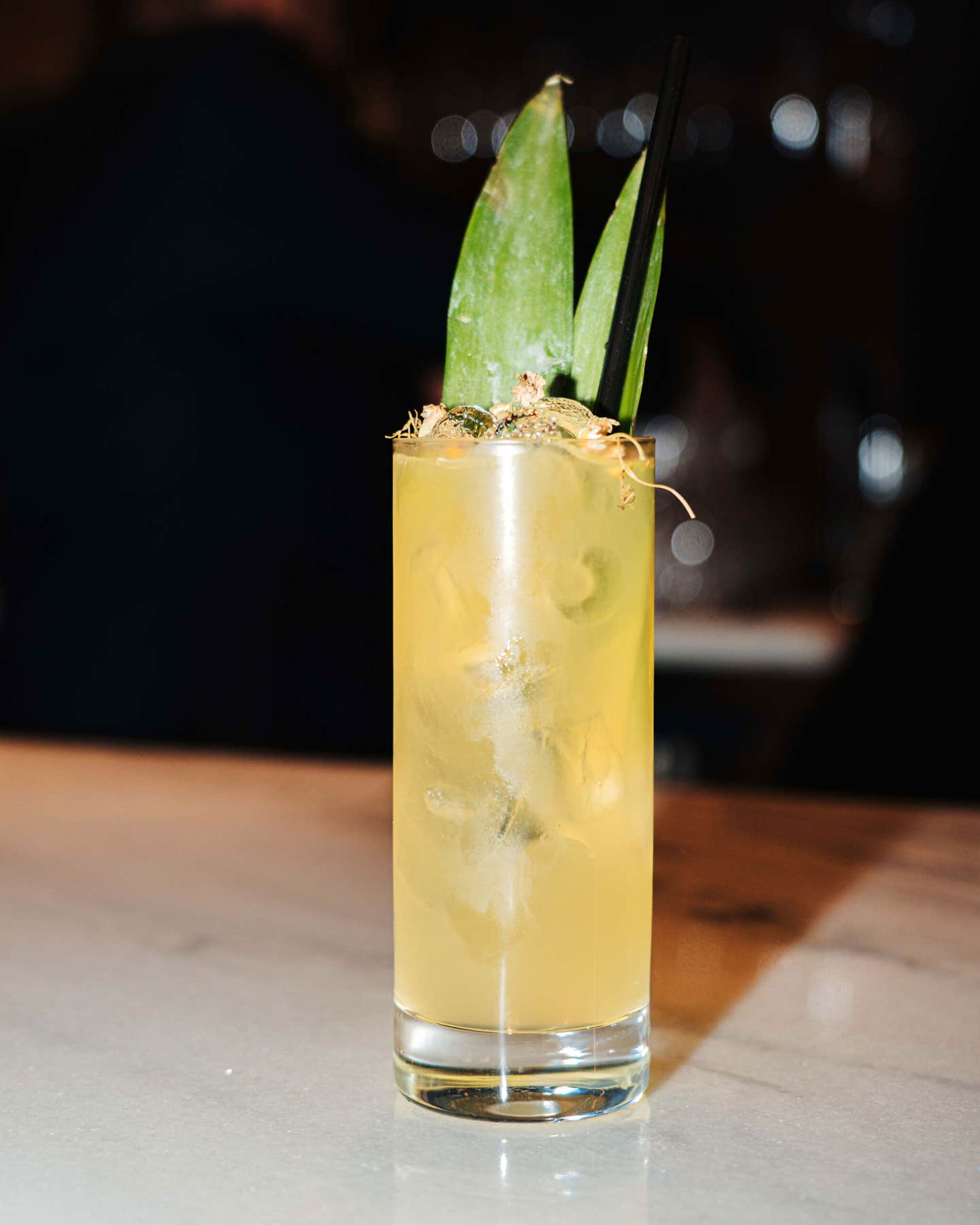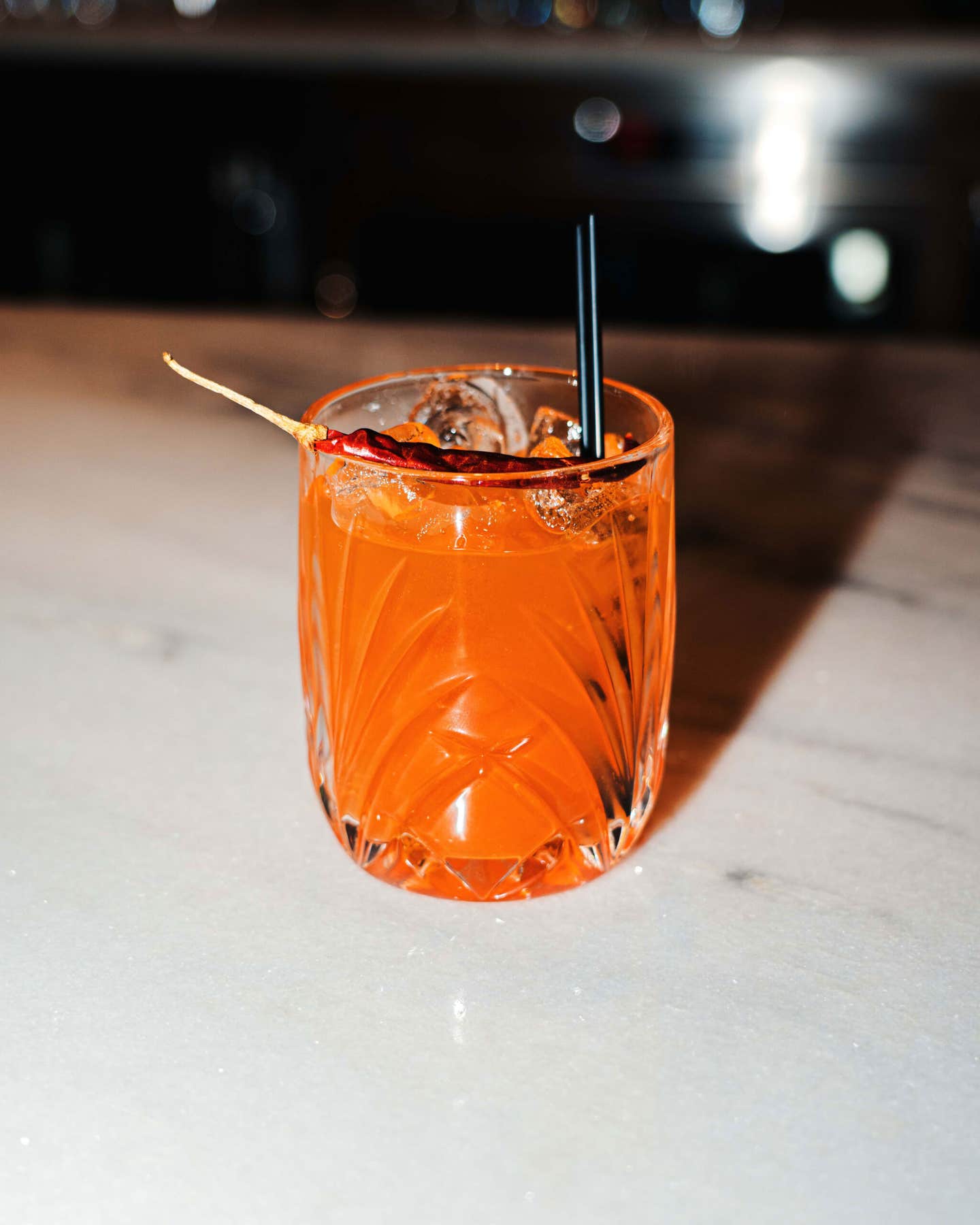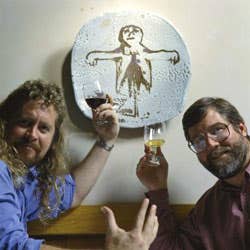
Wine Country Wise Guys
Jim Clendenen and Bob Lindquist have been called a couple of the best winemakers in America. They have also been called, in the catalogue of a wine shop that enthusiastically sells their wares, "the Beavis and Butthead of [the] local wine scene." It is essential to an appreciation of their wines, and of their place in the world of wine, to understand that there is truth in both assessments. It is precisely the combination of contrasting qualities they betray, in fact—seriousness blended with irreverence, consistency with unpredictability—that makes their doings so rewarding to follow, and their wines so good to drink.
Clendenen and Lindquist make wine in Santa Barbara County, a thick wedge of land—sort of a wavy rectangle with a couple of jags on top—set into the Southern California coastline, beginning about 70 miles northwest of Los Angeles. The county's lower reaches are largely residential; here are found, for instance, the communities of Summerland (briefly the site of a borrowed "Western White House" in the early days of the Clinton administration) and Montecito (very pretty, very private, very posh), and the city of Santa Barbara itself—an attractive whitewash-and-red-tile town, known for its Cal-Med lifestyle and popular as a weekend vacation destination for Los Angelenos.
On the other side of the Santa Ynez Mountains, about a 45-minute drive beyond the city to the north and east through the San Marcos Pass, a different kind of territory begins. Highway 101, which snakes through the county following approximately the course of the old El Camino Real, or Royal Road, built by the Spanish in the 18th century, transects three consecutive valleys, the Santa Ynez, the Los Alamos, and the Santa Maria. The basic landscape is typical of California's vast coastal interiors—sloping meadows, broad pastures, and rolling hills (these are lush green in winter and early spring, and otherwise relentless straw-yellow and dusty brown), punctuated by little clumps of grandly spreading live oak trees and tall stands of eucalyptus. Set into this rural landscape are thoroughbred horse farms, commercial flower fields, celebrity estates, and oil fields full of black rocking-horse pumps.
And all over this portion of the county, bordering the farms and estates, patchworked with the oil fields, stretching off over the hills, are vineyards—chardonnay, pinot noir, riesling, cabernet, syrah—producing grapes now recognized as some of the best in California.
The first winemakers in this region were Spanish missionaries who established outposts here in the late-18th century, immediately planting grapevines for the production of sacramental wine. Commercial vineyards followed, and by the late-19th century, there were more than 5,000 acres of grapes in the area. Prohibition all but wiped out local growers, and by the 1950s, grapevines were mere curiosities here. A revival of local viticulture began in 1964 and kicked into high gear in the early '70s. Today there are about 20,000 acres of vines in the county.
Jim Clendenen and Bob Lindquist—who make wine under several labels between them, but whose principal concerns are Au Bon Climat and Qupe, respectively—certainly weren't the first to make wine here, or even to make good wine. But in a way they are the definitive local winemakers. Because the region was—Spanish mission vineyards aside—virgin territory for wine until recently. There were no rules, no traditions, no expectations in the marketplace. While their earlier counterparts in Napa and Sonoma were usually European immigrants with enological baggage in hand, the wine pioneers in Santa Barbara County were mostly all-American, and they traveled light.
Nobody told them what grapes they could or couldn't plant—or, if somebody did tell them, they probably didn't listen—and nobody told them what or how to market. As another of the region's young vintners, Bryan Babcock of Babcock Vineyards, puts it, "There's sort of a maverick attitude throughout Santa Barbara County. There just isn't any institutional line that people feel they have to follow."
Clendenen and Lindquist share "maverick" as a middle name. Informally schooled, Francophilic, energetically unpredictable, they might be called post-modern vintners—redefiners of categories, disrespecters of the party line (though always first in line to party). They are winemakers who don't see why rustic tradition and technical innovation, or even business and fun, should be mutually exclusive. And they turn out extraordinary wines—luscious chardonnays, dark and spicy pinot noirs with more strength of character than most bordeaux, inky-red syrahs that seem to have captured the very soul of grapes, flower-and-honey viognier and viognier blends.
Au Bon Climat (whose name might be loosely translated as "Where the Sun Always Shines") and Qupe (the local Chumash Indian word for the California poppy, which grows in great abundance hereabouts) are not showplace wineries—not hardly. They're a matched set of Butler buildings, linked by a common roof, on a near-barren plot surrounded by celery fields on land that belongs to the independently owned Bien Nacido Vineyard (one of the county's best). Though their businesses are independent, Clendenen and Lindquist share quarters in these buildings so intimately that it is impossible to tell where one winery stops and the other begins. They are meshed like a handshake.
There are David Bowie and R.E.M. posters on the walls in one building, and a basketball net on a pole is set up next to some barrels—and casual conversation is as likely to involve rock music or sports as it does volatile acidity or clonal selection. Neither winery offers tastings, and both would probably shoot tour buses on sight. A typical message on the answering machine at Au Bon Climat might say something like, "Our winery is not open to the public for tours, tasting, or direct sales. We're not looking for new customers. We're not in the office every day. Far from it."
The wineries' informal atmosphere extends beyond their walls. Clendenen and Lindquist travel frequently, selling their wines in a blur of raucous tastings and long liquid lunches, and keeping an eye on what winemakers in France and Italy are up to. And they welcome colleagues from the whole world of wine to their Santa Maria Valley digs as well. "It's amazing," says one California wine merchant who visits the two often. "People come from everywhere to see these guys, and you'll have French winemakers meeting Italian winemakers for the first time and suddenly discovering, 6,000 miles from home, that they might have something to teach each other."
Jim Clendenen was born in 1953, in Akron, Ohio—where, he insists, "people are raised up bright as hell." Ironically, his father worked for the Firestone Tire Company as a chemical engineer—ironically, because one of the pioneers of local winemaking, and the owner of the county's largest winery, is A. Brooks Firestone, scion of the tire family. The Clendenens moved to California in 1967, and in 1971, Jim enrolled at the University of California, Santa Barbara, with a pre-law major. After taking some time off to kick around Europe—he visited 18 countries and lived for a time in Bordeaux—he returned and graduated. By this time, the wine bug had bit. He dutifully applied to law school, but in the meantime went to work on the bottling line—grunt work—at the Zaca Mesa Winery, another local pioneer in the Santa Ynez Valley.
The next thing he knew, he was learning to make wine under winemaker Ken Brown (later the founder of Byron). After three years, he left to travel, worked two vintages at a winery in Australia, and went to live briefly in Burgundy. In 1982, full of ideas about how wine should be made—"Everything I do I learned in France," he says—he founded Au Bon Climat in partnership with his friend Adam Tolmach, another veteran of Zaca Mesa, who happened to have a degree in enology from the University of California, Davis. (Clendenen and Tolmach have since parted ways; Tolmach now makes wine in the neighboring Ojai Valley under The Ojai Vineyard label.)
Bob Lindquist was also born in 1953, in, as he says, "Missoura." His family moved to California in 1964, and he ended up studying social science at the University of California, Irvine, in Orange County, and then dropped out. He got a job with a small local ad agency designing window displays for shops. One of his clients was a wineshop, and Bob worked out a deal to get paid in wine.
His epiphany came in a bottle of 1974 Simi Cabernet. "It blew my mind," he says—and it made him a confirmed wine-lover. He moved to Hollister in California's Central Valley in 1975 to live with an uncle, and went to work as the tasting-room manager for the San Martin Winery. When he moved down to Camarillo, between Los Angeles and Santa Barbara, to manage the winery's tasting room there, he got to know the Santa Barbara region. He moved up to the Santa Ynez Valley to manage a wineshop in Los Olivos, then promptly got fired for taking time off to go to a Kinks concert.
But the owners of the shop also owned the Zaca Mesa Winery, and hired him there as their first paid tour guide. There he met Clendenen, Ken Brown, and Adam Tolmach. "They let me help with the harvest," he recalls, "and then I helped them make the wine. I'd never realized how easy winemaking was until I did it."
While Clendenen was attracted to the wine styles of Burgundy, Lindquist fell under the spell of the amazing Rhone wines that Berkeley wine merchant Kermit Lynch had just started to import. "We were all wine geeks," says Lindquist, "and we knew we had to do something on our own."
In 1982, the same year that Clendenen and Tolmach started Au Bon Climat in an old dairy barn in Los Alamos, Lindquist rented space for Qupe at Zaca Mesa and several other wineries. Then the owners of the Bien Nacido Vineyard offered to build the two wineries a shared facility. They opened in 1989.
"The thing about Santa Barbara County," says Clendenen, "is that we have a long, cool growing season with not much rain. You can grow just about anything here and get absolutely top quality. You can even get great syrah and pinot noir from the same vineyard, like we do here at Bien Nacido." The region's secret is that here, exceptionally, the coastal mountains run east and west (like the coastline itself) instead of north and south. This allows ocean breezes and fog to flow easily inland from the Pacific, providing a cooling influence beneficial to the grapes. Thus the grapes benefit from what viticulturists call a long hang time: The climate is basically mild, so grapes appear comparatively early, but it's cool enough that they take a long time to ripen developing more flavor.
In viticultural terms, a growing season of 100 days or so is considered highly desirable; in Santa Barbara County, seasons of 110 days or more are common.
Clendenen and Lindquist take full advantage of the wide range of grapes available in the region, and also buy from other parts of California. At any given time, the winemakers estimate, they have somewhere between 60 and 100 different wines in cask. "Maybe we've got too many different wines coming out," admits Clendenen. "Making what you want to make is easy, but knowing what you ought to intend to make is hard."
Keep Reading
Continue to Next Story



